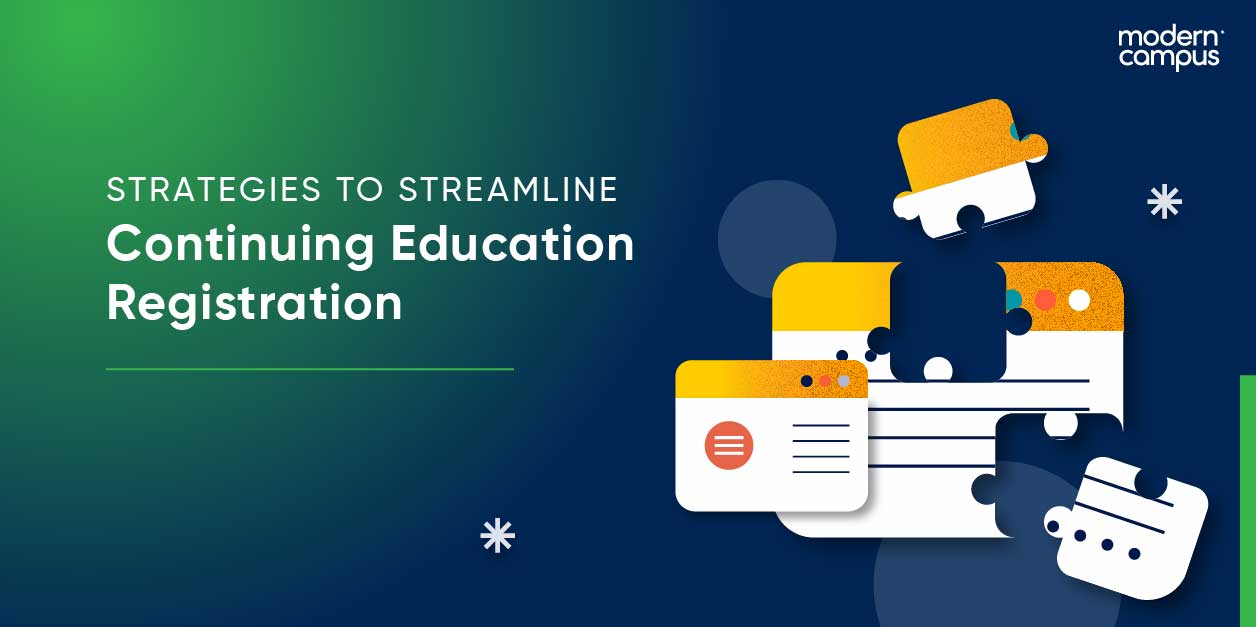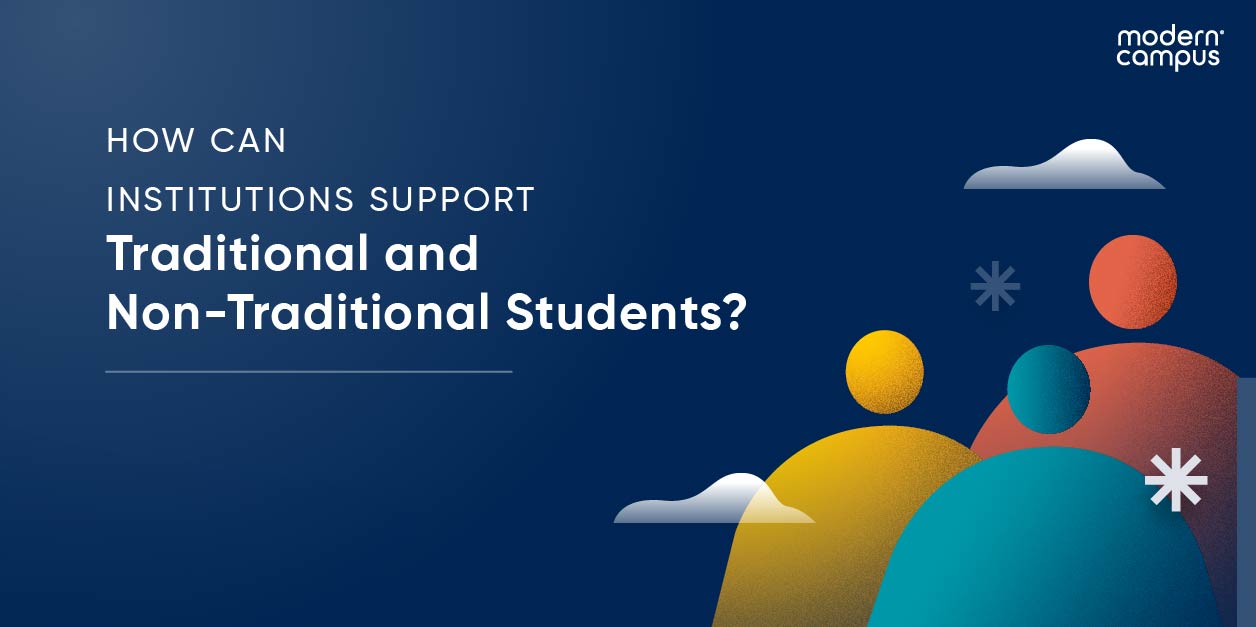Streamlining Continuing Education Registration to Maximize ROI
Continuing education plays a vital role in professional development, offering adults valuable learning opportunities, skill development, and career advancement. However, the registration process for these programs can be challenging and time-consuming.
With these barriers in place, learners are at risk of questioning the value of higher education—is it all worth the hassle?
Higher ed leaders need to start understanding the common challenges learners face in order to begin strategizing and streamlining processes so that the return on investment (ROI) of continuing education to learners is clear.
Challenges in Continuing Education Registration
1. Lack of Centralized Information
One of the primary challenges faced by individuals seeking continuing education is the lack of centralized information.
Students often struggle to find a comprehensive course catalog, detailed course schedules, and admission process requirements. This fragmented approach can lead to confusion and hinder the enrollment process.
2. Complex Registration Forms
Lengthy and complex registration forms can be significantly discouraging for prospective students. The overwhelming nature of these forms, filled with extensive personal details and academic history, can hinder individuals from completing the registration process.
3. Limited Payment Options
Higher education isn’t affordable for everyone, and having limited payment options can make the ROI less clear.
Traditional methods, such as checks or money orders, may not be convenient for busy professionals. Online payment systems or alternative payment methods are critical.
Strategies to Streamline the Registration Process
1. Centralize Your Registration Platform
To address the lack of centralized information, educational institutions, and training providers can establish a centralized student registration platform. This platform should provide a user-friendly interface where students can access a comprehensive course catalog, view course schedules, and find relevant information about the admission process.
By centralizing information, prospective students can make informed decisions and streamline their enrollment process.
2. Simplify Your Registration Forms
Simplifying registration forms is crucial to improving the overall user experience. Institutions should focus on collecting only essential information, eliminating unnecessary fields, and optimizing the form layout.
By reducing the time and effort required to complete the registration process, more individuals are likely to enroll in programs offered by continuing education units.
3. Offer Early Bird Discounts
Incentivizing early enrollment through early bird discounts can motivate learners to register early. By providing financial benefits to early registrants, institutions can encourage proactive decision-making and increase enrollment rates.
This strategy rewards individuals who prioritize their professional development and take advantage of the available learning opportunities.
4. Provide Multiple Payment Options
To enhance accessibility, offering multiple payment options is essential. Institutions should consider integrating online payment systems, accepting credit cards, and providing flexible payment plans.
By accommodating various payment preferences, more individuals can progress through their academic journey without facing unnecessary barriers.
5. Automate Confirmation and Reminder Emails
Automating confirmation and reminder emails can significantly improve the communication process between institutions and enrolled students. These automated emails should include pertinent program details, course schedules, and any additional requirements.
By providing timely and relevant information, institutions can enhance the student experience and minimize confusion.
Measuring the ROI of Continuing Education
1. Assessing Career Advancement
One way to measure the ROI of continuing education is by assessing career advancement. Individuals can evaluate whether the acquired knowledge and skills have resulted in promotions, salary increases, or expanded job responsibilities. By analyzing the impact of continuing education on career progression, individuals can determine the value of their investment.
2. Calculating Earnings Potential
Another method to measure ROI is by calculating the earnings potential. Individuals can compare their pre-education income to their post-education income to gauge the financial benefits gained from continuing education. This analysis provides tangible evidence of the value of investing in professional development.
3. Long-Term Benefits
ROI extends beyond immediate career advancement and financial gains. Continuing education often leads to long-term benefits, such as expanded professional networks, improved job satisfaction, and a broader skill set. These intangible benefits contribute to an individual's overall growth and well-being.
Learners today need to see immediate gratification to see the value in something. That’s especially true for higher education, as many people are very skeptical of its outcomes and cost. First impressions are important and that begins with a student’s registration process.
By centralizing information, simplifying registration forms, offering early bird discounts, providing multiple payment options, and automating communication, institutions can enhance the enrollment experience for prospective students.
What’s more, measuring the ROI of continuing education through career advancement, earnings potential, and long-term benefits allows individuals to make informed decisions about investing in their professional development.
With a streamlined registration process and a clear understanding of the value of continuing education, individuals can embark on a journey of lifelong learning and unlock new opportunities for personal and professional growth.
Last updated: November 13, 2023





